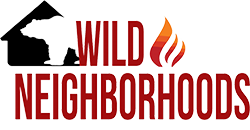Jackson Hole News & Guide, Cory Hatch– Days after the Cliff Creek Fire jumped Highway 191 and began burning toward Granite Creek, I drove my family down Hoback Canyon en route to a weekend getaway. Fire officials had just reopened the highway, and you could see smoke pouring from hot spots on ridges and charred trees along the roadside. Near town the fire left scorched grass within a few yards of a cabin.
Over the past few weeks wildland firefighters on the Cliff Creek and Lava Mountain blazes have saved dozens of homes around Jackson Hole. Before the snow flies they will likely save hundreds more.
It’s disappointing, then, to hear that so few residents who live near these blazes have bothered to prepare their homes for a forest fire.
Poorly maintained yards and homes pose an unacceptable risk for firefighters. If the Cliff Creek Fire did move down into Granite Canyon, firefighters would need a safe zone clear of fuels in order to defend individual buildings.
As the Cliff Creek Fire threatened to descend on homes along Granite Creek, firefighters were using chain saws to clear flammable brush and trees from private land, according to multiple reports. They removed overhanging branches from rooftops and propane grills and firewood from porches.
These men and women could have spent these hours — and tax dollars — extinguishing the fire.
Fighting forest fires is hazardous enough without man-made hazards in the wildland urban interface, the stretch of developed private land along the forest boundary.
Take, for example, the Granite Mountain Hotshots. On June 30, 2013, 19 members of the Granite Mountain Hotshots died after the Yarnell Hill Fire overran their position just outside Yarnell, Arizona.
Those elite firefighters — the crew included veterans, recent high school grads and parents of young children — had worked long shifts for nearly a month straight to protect private homes and businesses. In the end the fire burned more than 100 houses before it was fully contained.
The Yarnell Hill blaze marked the largest number of wildland fire fatalities in a single forest fire since 1933. But the blaze is only an anomaly because of the number of firefighters who died. Since 1910 roughly 1,100 wildland firefighters have lost their lives protecting communities around the country. Across the U.S., 13 firefighters died in 2015, and 10 the year before that.
It’s worth thinking about these fallen heroes as the Cliff Creek Fire (27,868 acres as I write this) and the Lava Mountain Fire (13,069 acres) burn near Bondurant and Togwotee Pass respectively. The hundreds of people fighting those two blazes are putting their lives on the line to protect private houses and other structures.
The crazy hours worked by the Granite Mountain Hotshots before the Yarnell Hill Fire tragedy is just a snapshot of the work ethic of thousands of dedicated wildland firefighters across the country. Unfortunately, it’s also a snapshot of just how thin these men and women are often spread. In recent years federal budgets haven’t kept up with forest fire activity in the U.S.
Reports after the Yarnell Hill Fire showed that fatigue played a major role in the Granite Mountain Hotshots tragedy. The fire officials charged with protecting crews on the ground were overtired and understaffed and made bad decisions as a result.
Providing tree cutting and yard cleaning services on private land during an active blaze only spreads these resources thinner and increases the danger. Homeowners in the wildlife urban interface can ease the burden on wildland firefighters by protecting their homes before the fire starts.
Some fixes to the home such as metal roofs and sprinklers are expensive, but many precautions are simple and cheap. Perhaps the most effective way to protect a home from forest fires is to create defensible space: clearing an area of flammable material 100 feet around the building. Pruning tree limbs to a height of 6 to 8 feet keeps the fire on the ground where it’s easier to fight.
Good resources are available to help homeowners make their homes more fire resistant. Here are just a few: FireWise.org, WildNeighborhoods.org/helpful-tips/protect-your-home-from-wildfire and GACC.NIFC.gov/gbcc/dispatch/wy-tdc/index.php.
Homeowners in the wildland urban interface have a personal responsibility to prepare the properties for the possibility of a forest fire. It’s also an act of compassion and respect for the people who risk their lives to protect our communities.
